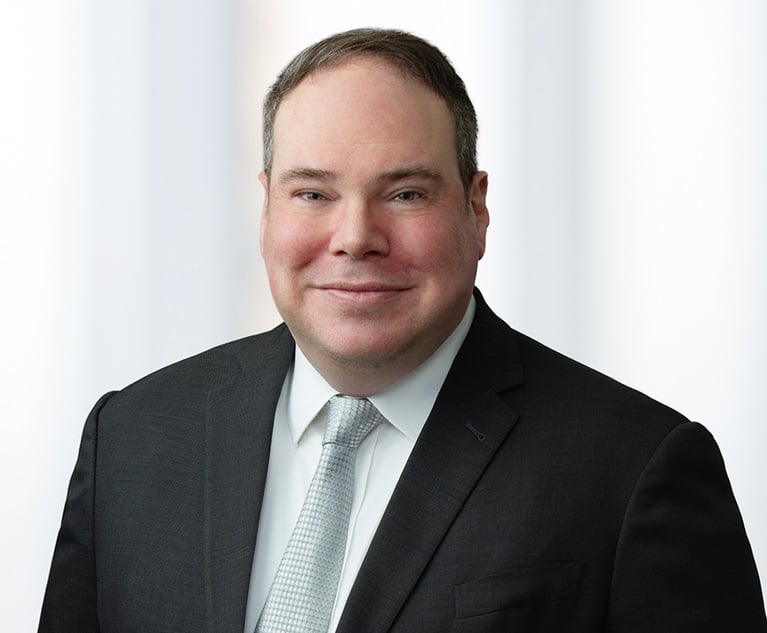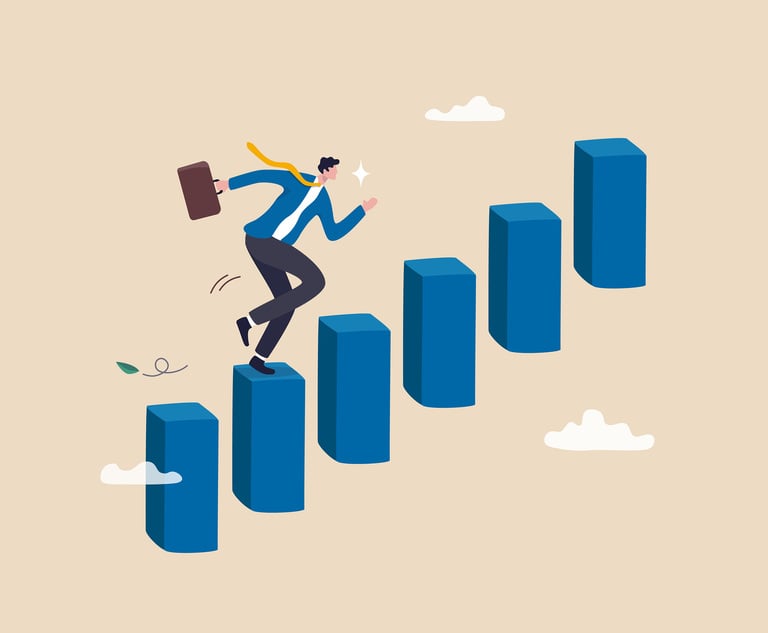Bringing E-Discovery In-House Requires Training, Support and Soul-Searching
Time, effort and the sheer density of the subject matter pose significant impediments to providing the training that law firm employees need.
August 05, 2019 at 03:00 PM
8 minute read
The original version of this story was published on Legal Tech News

There's a regular process that occurs inside most law firms every three years or so, depending on the expiration dates attached to the service contracts the organization has with outside e-discovery providers.
Debbie Reynolds, data privacy officer at Eimer Stahl, describes it as a pendulum, a process by which firms take a look at their ongoing budgets and expenditures to re-evaluate whether they would be better served by bringing e-discovery in-house.
"About every three years you can reconsider, 'Are we doing the right thing? Are we looking at the right software? Do we have the right staffing?'" Reynolds says.
Buoyed by cloud-given independence from expensive infrastructure and hardware, it's become easier for firms to move the e-discovery process in-house. Still, if there's one factor that could cause them to pump the brakes, it's training—or, more specifically, the investment of time and capital necessary to keep the right people up-to-date on an area of practice that is ever-changing as technology continues to evolve.
Why Training Goes Far
It's better to get this out of the way up front: Walking into the office one morning and saying, "Hey guys, we do e-discovery now" is not an option, even if a firm does plan to sink a bundle into erecting a sophisticated infrastructure.
Investing in an array of high-powered e-discovery tech and software is all well and good, but putting it into the hands of an untrained staff is still akin to tossing a set of Porsche keys to someone who slept through the entirety of driver's ed. As David Hasman, litigation support manager at Bricker & Eckler, says, "If you don't have talent to drive that technology, that technology is useless."
Hasman acknowledges that while every practice group within the firm may not need e-discovery, there's still enough of an overlap to make some general knowledge on the subject a worthwhile pursuit. Most of the incentive begins and ends with clients, specifically responding to their questions about where the dollar signs in their legal bills originate.
"The biggest spend from a client's perspective when you're facing litigation is typically the discovery. … You as a lawyer better be able to talk to your client and educate them on the process, why it's important and the costs associated with it," explains Joseph Tate, director of e-discovery and practice advisory services at Cozen O'Connor.
What's more, with big data on the rise across companies of all sizes, the use for e-discovery tools and techniques extends far beyond legal matters. Firms that limit the number of trained employees across each department could be depriving themselves of additional opportunities for revenue.
Hasman says the bulk of his firm's use of e-discovery provider Relativity isn't even primarily related to e-discovery. For example, many of the firm's clients have ties to the oil and gas industries, so Bricker & Eckler uses custom applications in conjunction with Relativity to help manage the logistics of building pipelines both domestically and abroad.
"By owning the [e-discovery] technology, bringing it in-house, having subject-matter experts, it's allowed us to expand our portfolio into areas that we really would never be able to do if we vended work out all of the time," Hasman says.
Unlike firms, the factors driving e-discovery training in corporate legal departments may be less about creating new revenue streams and more about trying to keep up with market forces. The results from e-discovery company Exterro's 2018 In-House Legal Benchmarking Report showed 69% of legal teams conducted most of their litigation in-house, a 50% increase from 2017.
A Teachable Moment
Training is a must for firms or legal departments looking to bringing e-discovery in-house, but that doesn't mean it's easy. Some of the challenges are more obvious than others, but almost all are insurmountable if an organization's top leadership doesn't get on board from the beginning.
Cozen O'Connor's Tate notes that this problem can be a real possibility in law firms. "You still have some old-school partners who just don't get it. They're like, 'Why are we doing this? This doesn't make sense,'" he says.
To be sure, corporate legal departments aren't immune to the whims of foot-dragging folks either. George Socha, a managing director in BDO's forensic technology services practice, points out that some companies have never had a reason to focus on e-discovery. Still, a sudden spike in litigation can force their hand.
But necessity does not always translate into enthusiasm, at least in the eyes of some of the companies that Socha has spoken with about starting down the e-discovery path. "Their response is, 'You've got to be kidding. This is what's going on? This is insane,'" Socha says.
E-discovery is a relatively dense subject to wrangle, and getting the material to make sense of it is one of the biggest challenges in training. Even if trainees are enthusiastic to engage with the subject matter, the process can still be like trying to teach someone a second language.
Tate, who is fluent in tech-speak, has to reverse-engineer what he already knows to explain it in a way that is accessible for a nontech audience. Some of the terms known to spark confusion aren't even among the more robust in the e-discovery lexicon, such as "gigabyte."
Once the groundwork is laid for that basic level of understanding, the process does get easier. But it still takes time. And with firms and corporate legal departments striving for increased efficiency, convincing them to make time for e-discovery training might be a tough sell.
Of course, it's not just a question of increasing training at legal departments and law firms, but also of making sure such training is conducted by professionals and covers topics that are specific for each organization. Training people to collect from mobile devices likely requires a different trainer than regular messages, Socha says.
Eimer Stahl's Reynolds sees training as a continuum, a practice that builds on itself until some degree of proficiency starts to take hold. Teaching people the motions or mechanics of how to use a particular piece of software or equipment is one thing, but proper training has to extend beyond the "how" and into the "why," she says. And that also takes time.
"You can teach someone how to open a database, do searching and things like that, but the thing that is harder to grasp is why you do a certain thing for a certain result. So a lot of time, people may have the tools but they may not know in what situation they need to use one tool or another," Reynolds says.
Pay It Forward
Good news first: Many of the problems outlined above can be addressed via well-thought-out training regimens and a moderate expenditure of resources both old and new. The bad news is that there may be some light travel involved.
In May, Tate journeyed up to Cozen O'Connor's office in Toronto to deliver one of his e-discovery road shows that serve as a sort of primer to the field, touching on fundamentals such as reviewing, coding and producing. It's a more palatable alternative to hiring an outsider to conduct training at each of the firm's far-flung locations.
"When you have a firm that has offices all over the country, we feel it's really important to get out there [and] get in front of the various offices," Tate says.
Still, he can't be everywhere at once. When it comes to knowledge, Tate appears to subscribe to a trickle-down theory. He receives emails daily from the Sedona Conference or other sources containing fresh e-discovery case law and other developments in the field so that his curriculum remains up-to-date.
"I'm doing that every day," Tate says. "For me, who is ultimately the trainer, I have to make sure that I'm putting forth the effort."
And then there's the associates program that Tate and Cozen O'Connor developed, which riffs on the concept of paying it forward. He and his team identified a group of 12 second- to fifth-year associates to train on e-discovery and eventually turn into subject-matter experts in their own right.
The idea is that these people will then turn around and spread that knowledge among their own teams and co-workers. Tate views it as a quid pro quo.
"They get the benefit of having this knowledge, and then it helps us to disseminate the information," he says.
Failing that, Tate has also been working on an e-discovery playbook that the firm's employees will be able to access online. Variety is important in e-discovery training because one lawyer might not learn the same way as the person occupying the office next door.
Reynolds says that Eimer Stahl deploys a variety of e-discovery training techniques, but one in particular may be helpful in cutting through the overall density of the subject matter. Over the period of a year, the firm collects questions from employees related to e-discovery and then compiles them into a top 10 list complete with answers.
"We'll write a training manual so that they have a takeaway," Reynolds says, "so hopefully that top 10 list won't come up next year."
Email: [email protected]
This content has been archived. It is available through our partners, LexisNexis® and Bloomberg Law.
To view this content, please continue to their sites.
Not a Lexis Subscriber?
Subscribe Now
Not a Bloomberg Law Subscriber?
Subscribe Now
NOT FOR REPRINT
© 2025 ALM Global, LLC, All Rights Reserved. Request academic re-use from www.copyright.com. All other uses, submit a request to [email protected]. For more information visit Asset & Logo Licensing.
You Might Like
View All

Sullivan & Cromwell Signals 5-Day RTO Expectation as Law Firms Remain Split on Optimal Attendance

Eversheds Sutherland Adds Hunton Andrews Energy Lawyer With Cross-Border Experience
3 minute read
Trending Stories
Who Got The Work
Michael G. Bongiorno, Andrew Scott Dulberg and Elizabeth E. Driscoll from Wilmer Cutler Pickering Hale and Dorr have stepped in to represent Symbotic Inc., an A.I.-enabled technology platform that focuses on increasing supply chain efficiency, and other defendants in a pending shareholder derivative lawsuit. The case, filed Oct. 2 in Massachusetts District Court by the Brown Law Firm on behalf of Stephen Austen, accuses certain officers and directors of misleading investors in regard to Symbotic's potential for margin growth by failing to disclose that the company was not equipped to timely deploy its systems or manage expenses through project delays. The case, assigned to U.S. District Judge Nathaniel M. Gorton, is 1:24-cv-12522, Austen v. Cohen et al.
Who Got The Work
Edmund Polubinski and Marie Killmond of Davis Polk & Wardwell have entered appearances for data platform software development company MongoDB and other defendants in a pending shareholder derivative lawsuit. The action, filed Oct. 7 in New York Southern District Court by the Brown Law Firm, accuses the company's directors and/or officers of falsely expressing confidence in the company’s restructuring of its sales incentive plan and downplaying the severity of decreases in its upfront commitments. The case is 1:24-cv-07594, Roy v. Ittycheria et al.
Who Got The Work
Amy O. Bruchs and Kurt F. Ellison of Michael Best & Friedrich have entered appearances for Epic Systems Corp. in a pending employment discrimination lawsuit. The suit was filed Sept. 7 in Wisconsin Western District Court by Levine Eisberner LLC and Siri & Glimstad on behalf of a project manager who claims that he was wrongfully terminated after applying for a religious exemption to the defendant's COVID-19 vaccine mandate. The case, assigned to U.S. Magistrate Judge Anita Marie Boor, is 3:24-cv-00630, Secker, Nathan v. Epic Systems Corporation.
Who Got The Work
David X. Sullivan, Thomas J. Finn and Gregory A. Hall from McCarter & English have entered appearances for Sunrun Installation Services in a pending civil rights lawsuit. The complaint was filed Sept. 4 in Connecticut District Court by attorney Robert M. Berke on behalf of former employee George Edward Steins, who was arrested and charged with employing an unregistered home improvement salesperson. The complaint alleges that had Sunrun informed the Connecticut Department of Consumer Protection that the plaintiff's employment had ended in 2017 and that he no longer held Sunrun's home improvement contractor license, he would not have been hit with charges, which were dismissed in May 2024. The case, assigned to U.S. District Judge Jeffrey A. Meyer, is 3:24-cv-01423, Steins v. Sunrun, Inc. et al.
Who Got The Work
Greenberg Traurig shareholder Joshua L. Raskin has entered an appearance for boohoo.com UK Ltd. in a pending patent infringement lawsuit. The suit, filed Sept. 3 in Texas Eastern District Court by Rozier Hardt McDonough on behalf of Alto Dynamics, asserts five patents related to an online shopping platform. The case, assigned to U.S. District Judge Rodney Gilstrap, is 2:24-cv-00719, Alto Dynamics, LLC v. boohoo.com UK Limited.
Featured Firms
Law Offices of Gary Martin Hays & Associates, P.C.
(470) 294-1674
Law Offices of Mark E. Salomone
(857) 444-6468
Smith & Hassler
(713) 739-1250









